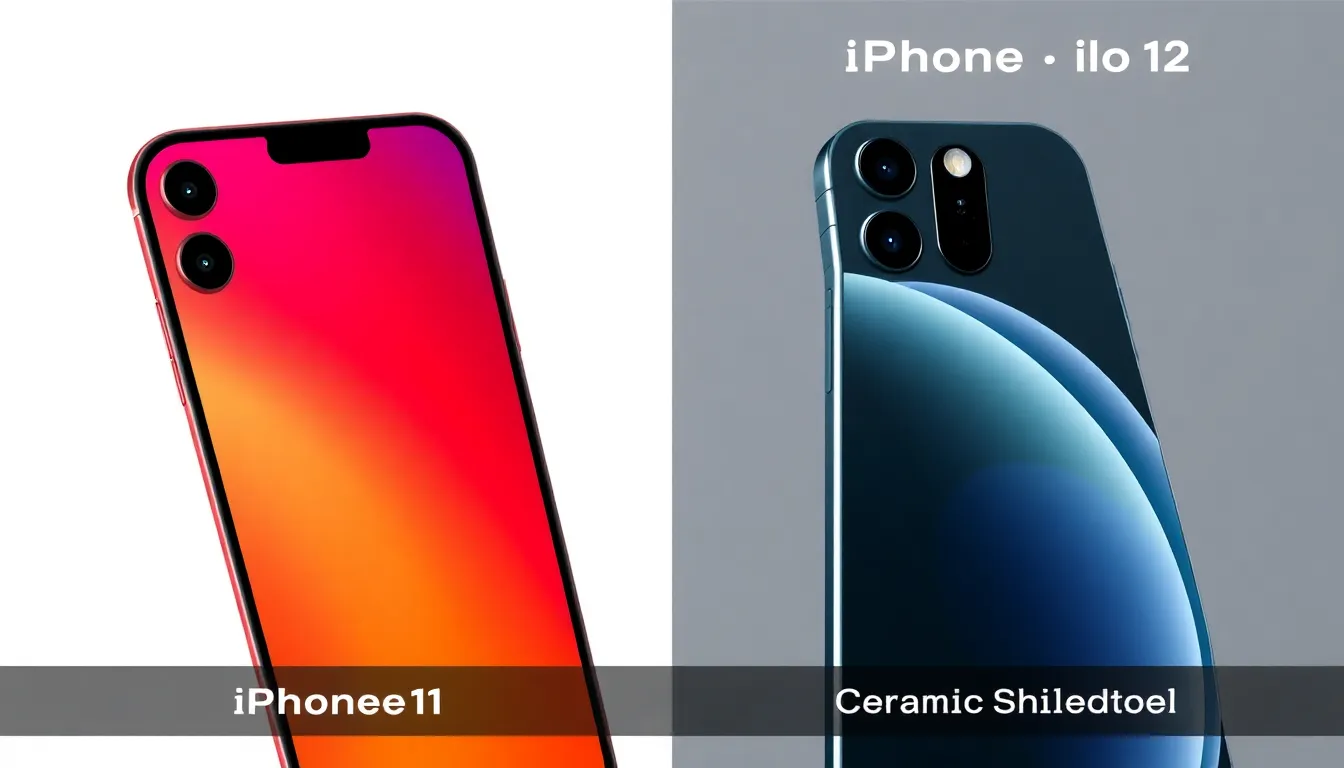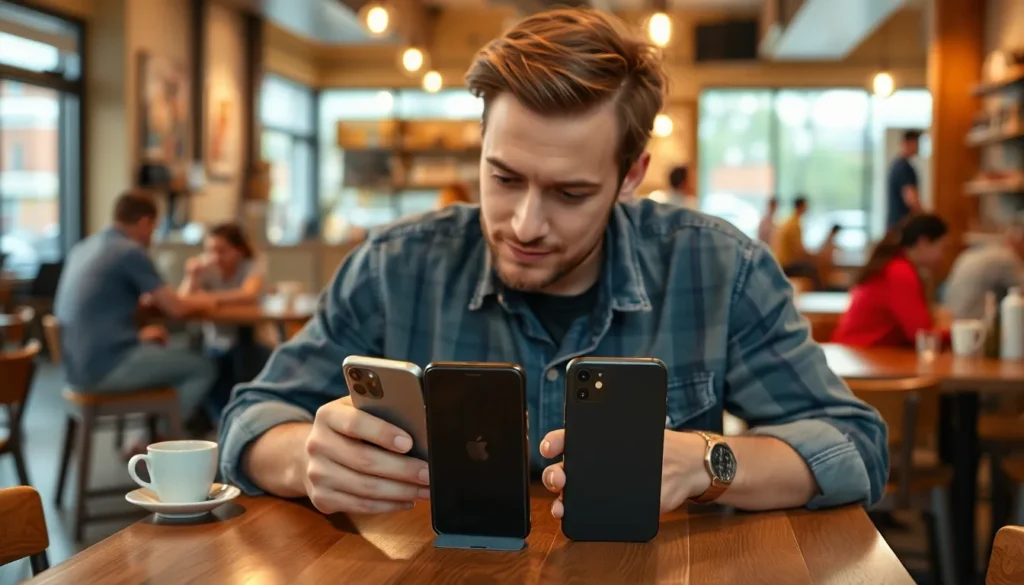Table of Contents
ToggleWhen it comes to smartphones, size matters—at least for those who love to flaunt their gadgets. The iPhone 11 and iPhone 12 may seem like siblings, but one of them definitely has a little more heft. Picture this: you’re in a coffee shop, and your friend pulls out their iPhone 12, only to be met with the realization that your iPhone 11 looks like it’s been hitting the gym a little less.
Size Comparison Overview
The iPhone 11 and iPhone 12 exhibit notable differences in size and form factor. Understanding these dimensions helps clarify the apparent disparities between the two models.
iPhone 11 Dimensions
The iPhone 11 measures 150.9 mm in height, 75.7 mm in width, and 8.3 mm in thickness. With a weight of 194 grams, it feels substantial in hand. The device features a 6.1-inch Liquid Retina display. Its rounded edges soften the overall look, creating a comfortable grip for users.
iPhone 12 Dimensions
In contrast, the iPhone 12 measures 146.7 mm in height, 71.5 mm in width, and 7.4 mm in thickness. At 164 grams, it is lighter than its predecessor. The Super Retina XDR display spans 6.1 inches as well. Flat edges define its design, offering a more modern aesthetic and different feel in hand.
Design Differences

The iPhone 11 and iPhone 12 exhibit distinct design features that enhance their individual appeal.
Material and Build
Apple designed the iPhone 11 with a sturdy aluminum frame and glass exterior. This model utilizes standard Gorilla Glass on both the front and back, providing decent durability. The weight measures at 194 grams, contributing to a solid feel in hand. The iPhone 12, on the other hand, boasts a Ceramic Shield front cover, enhancing its resistance to drops and scratches. Weighing 164 grams, it feels lighter while maintaining structural integrity. The aerospace-grade aluminum frame also adds to its premium feel and aesthetic.
Aesthetic Changes
While both models come with a 6.1-inch display, the iPhone 12 embraces a more refined look. Its flat edges and sleek profile provide a modern twist, contrasting with the curved edges of the iPhone 11. Users often notice that the newer model feels more contemporary. Color options differ, too; the iPhone 11 offers vibrant shades, whereas the iPhone 12 focuses on more muted, sophisticated tones. Attention to detail in the design can significantly impact user preference and overall satisfaction.
Display Specifications
The iPhone 11 and iPhone 12, while having the same screen size, differ in display technology and quality.
Screen Size and Resolution
Both models feature a 6.1-inch display. The resolution of the iPhone 11 reaches 1792 x 828 pixels, resulting in a pixel density of approximately 326 pixels per inch. In contrast, the iPhone 12 offers a higher resolution of 2532 x 1170 pixels, which translates to a pixel density of roughly 460 pixels per inch. Improved pixel density in the iPhone 12 provides sharper images and text. Variances in screen size and resolution impact visual clarity, making the display experience noticeably different between the two devices.
Display Technology
Liquid Retina technology defines the iPhone 11’s display, delivering accurate colors and decent brightness levels. On the other hand, the iPhone 12 utilizes Super Retina XDR display technology, enhancing brightness and contrast significantly. The iPhone 12 consistently achieves a maximum brightness of 1200 nits for HDR content, whereas the iPhone 11’s peak brightness is limited to 625 nits. Enhanced display technology in the iPhone 12 allows for a more immersive viewing experience, particularly in bright environments. Each display type caters to different user preferences, with the iPhone 12 providing superior performance in various lighting conditions.
Performance Factors
Performance factors between the iPhone 11 and 12 reveal significant differences that affect user experience. Understanding these aspects helps clarify which model performs better in various scenarios.
Weight Comparison
Weight influences how users handle their devices throughout the day. The iPhone 11 weighs 194 grams, which can feel substantial in hand. Comparatively, the iPhone 12 is lighter at 164 grams, making it easier to carry and use for extended periods. Users often prefer lighter devices for convenience, especially when multitasking. Overall, the weight difference contributes to the iPhone 12’s appeal as a more manageable option.
Thickness Analysis
Thickness plays a crucial role in the overall feel of a smartphone. The iPhone 11 measures 8.3 mm in thickness, resulting in a sturdier appearance. Meanwhile, the iPhone 12 is thinner at 7.4 mm, enabling a sleeker design. Thinner devices typically offer improved ergonomics and easier one-handed use. As each model features a 6.1-inch display, the thickness difference emphasizes how design choices impact user interaction and comfort while handling the phones.
When comparing the iPhone 11 and iPhone 12 it’s clear that size and design play pivotal roles in user preference. The iPhone 12’s lighter weight and slimmer profile make it easier to handle while offering a modern look with its flat edges. Although both models feature a 6.1-inch display the iPhone 12 delivers superior resolution and brightness enhancing the viewing experience.
Ultimately the choice between these two models may come down to individual taste in design and performance. Whether one prefers the classic curves of the iPhone 11 or the sleekness of the iPhone 12 both devices offer impressive capabilities to meet users’ needs.




